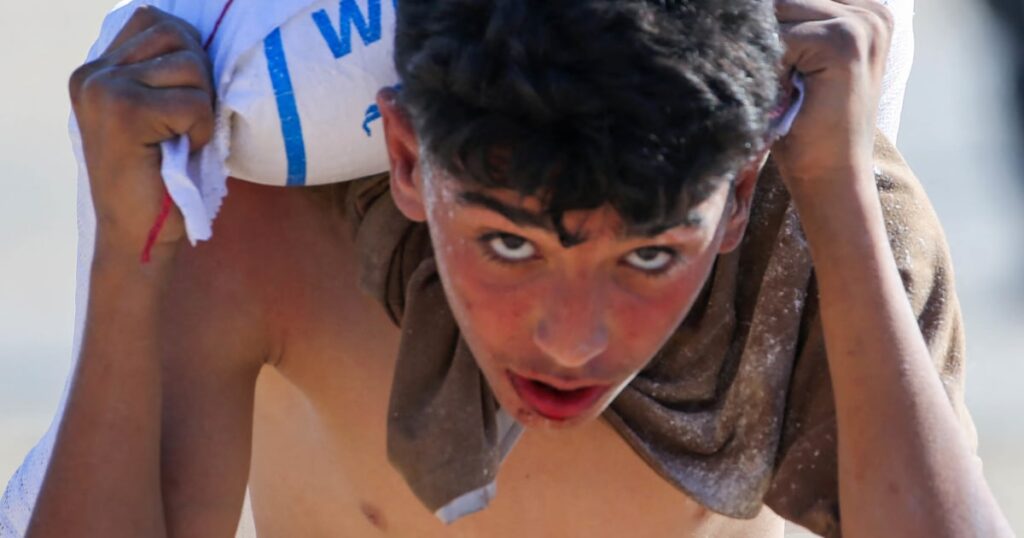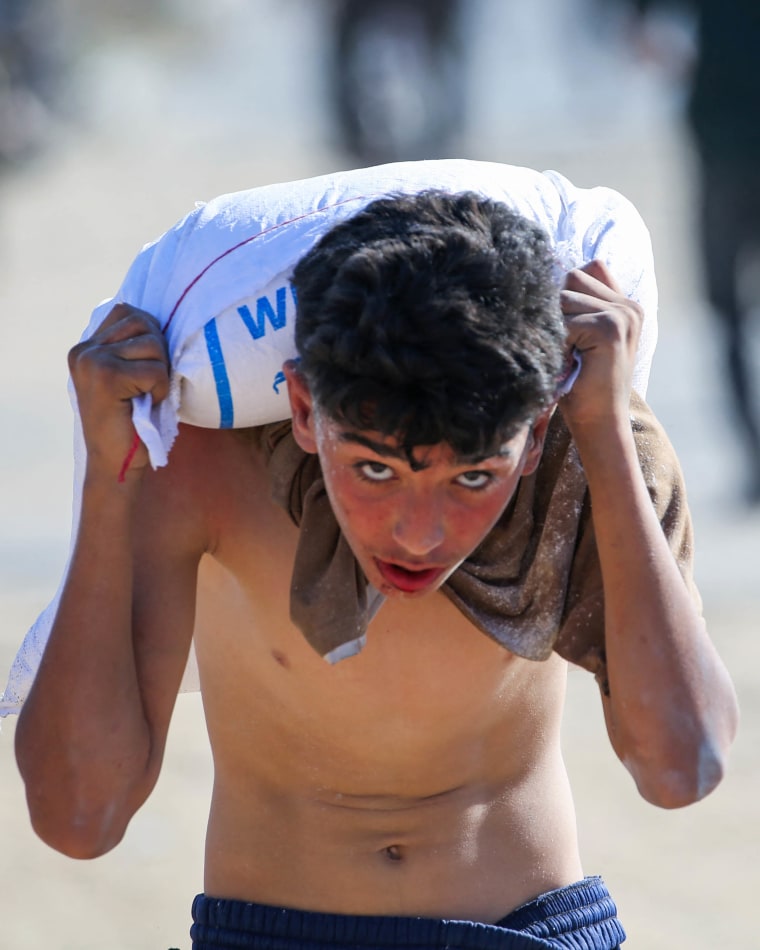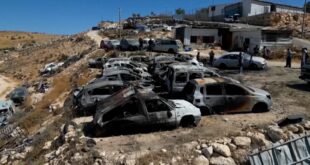
Tensions remained high Saturday as Hamas considered a U.S.-brokered ceasefire proposal that could bring an end to the fighting in Gaza, which ramped up after Israel launched a major military operation in the enclave earlier this month.
President Donald Trump told reporters at the Oval Office Friday that the deal which would pause hostilities for 60 days, allow the phased release of hostages, and pave the way for more humanitarian aid to flow into the devastated enclave, was “very close.”
The White House confirmed Thursday that Israel had accepted the proposals, but Hamas have responded coolly. Jihad Taha, a spokesperson for the militant group, told Al Jazeera late Friday that the proposals lacked “any immediate commitment to stop the war,” a key Hamas demand. But he said Hamas leaders were “seriously” discussing the proposals.
NBC News looks at what’s at stake:
What does the deal include?
Basem Naim, a senior Hamas official, shared a framework of the agreement with NBC News, which calls for an immediate 60-day halt in fighting, during which Hamas would release 33 Israeli captives in exchange for “a number of Palestinian prisoners.” In return, Israel would “halt all military operations” in Gaza as soon as the truce takes effect, and civilians would be allowed to return to their homes across the enclave.

Under the terms of the framework Israeli forces would withdraw in two phases — first from densely populated areas, then from urban centers — with full withdrawal to be completed by the end of the ceasefire period.
During the truce it says, “negotiations will continue to reach an agreement on the release of Israeli soldiers in exchange for a number of Palestinian prisoners.”
The agreement would also allow for the entry of 600 trucks per day carrying humanitarian aid, including fuel, cooking gas, and medical supplies.
Among the other proposals are that all border crossings between Gaza and Israel, and Gaza and Egypt, will also be reopened under international supervision, and patients and students will be allowed to travel abroad.
Will it lead to an end to the war?
While Hamas is yet to reject the agreement outright, differences that have derailed previous ceasefire efforts appear to remain.
The latest proposals lay the groundwork for a temporary pause in the fighting, but offer no guarantee of a permanent end to the war.
Hamas has signaled openness to talks but insists any lasting deal must include a complete cessation of hostilities and a full Israeli withdrawal from Gaza.
Israel meanwhile, has demanded that Hamas disarm, dismantle its military and governing infrastructure, and return all 58 remaining hostages before agreeing to end the war. Hamas has rejected those terms.

Israel launched its offensive in Gaza following the Hamas-led Oct. 7, 2023, terror attacks, in which some 1,200 people were killed and around 250 taken hostage, marking a major escalation in a decadeslong conflict.
Since then, more than 54,000 people, including thousands of children, have been killed in Gaza, according to the Palestinian Health Ministry in the enclave, which has been run by Hamas since 2007.
The ‘hungriest place on earth’
More than 4,000 people have been killed in the Strip since Israel shattered its ceasefire with Hamas in early March and imposed a blockade preventing food, fuel and medical supplies from entering Gaza. The country’s military launched a major new operation dubbed “Gideon’s Chariot,” which began earlier this month.
The latest proposals to end the fighting come as the U.N Office for the Coordination of Humanitarian Affairs called Gaza “the hungriest place on earth,” as Israeli continues to let only a trickle of aid into the enclave following an 11-week-long blockade that barred the entry of food and medicine into the enclave.

“The aid operation that we have ready to roll is being put in an operational straitjacket,” OCHA spokesperson Jens Laerke told reports in Geneva on Friday. Accusing Israel of “drip-feeding” food into the area, and said aid trucks were being surrounded “by desperate people who want to feed their families.”
“I don’t blame them for aid that essentially is already theirs, but it’s not distributed in the way we wanted,” he added.
Is aid getting into Gaza?
The U.S. and Israel-backed Gaza Humanitarian Foundation began operations this week days after Israel lifted its blockade, despite criticism from humanitarian groups who warned that they undermined a long-running humanitarian framework in Gaza and risked compromising the independence of aid operations.
They also expressed significant concern over a plan laid out by Israeli Prime Minister Benjamin Netanyahu to see aid distributed at sites in southern Gaza, effectively forcibly displacing Palestinians there.
In an update Saturday GHF said it had distributed 30 truckloads of food “providing approximately 1,663,200 meals.” It added that Saturday’s “meal distribution was the largest to date and five times more than yesterday.”
 Latest World Breaking News Online News Portal
Latest World Breaking News Online News Portal






